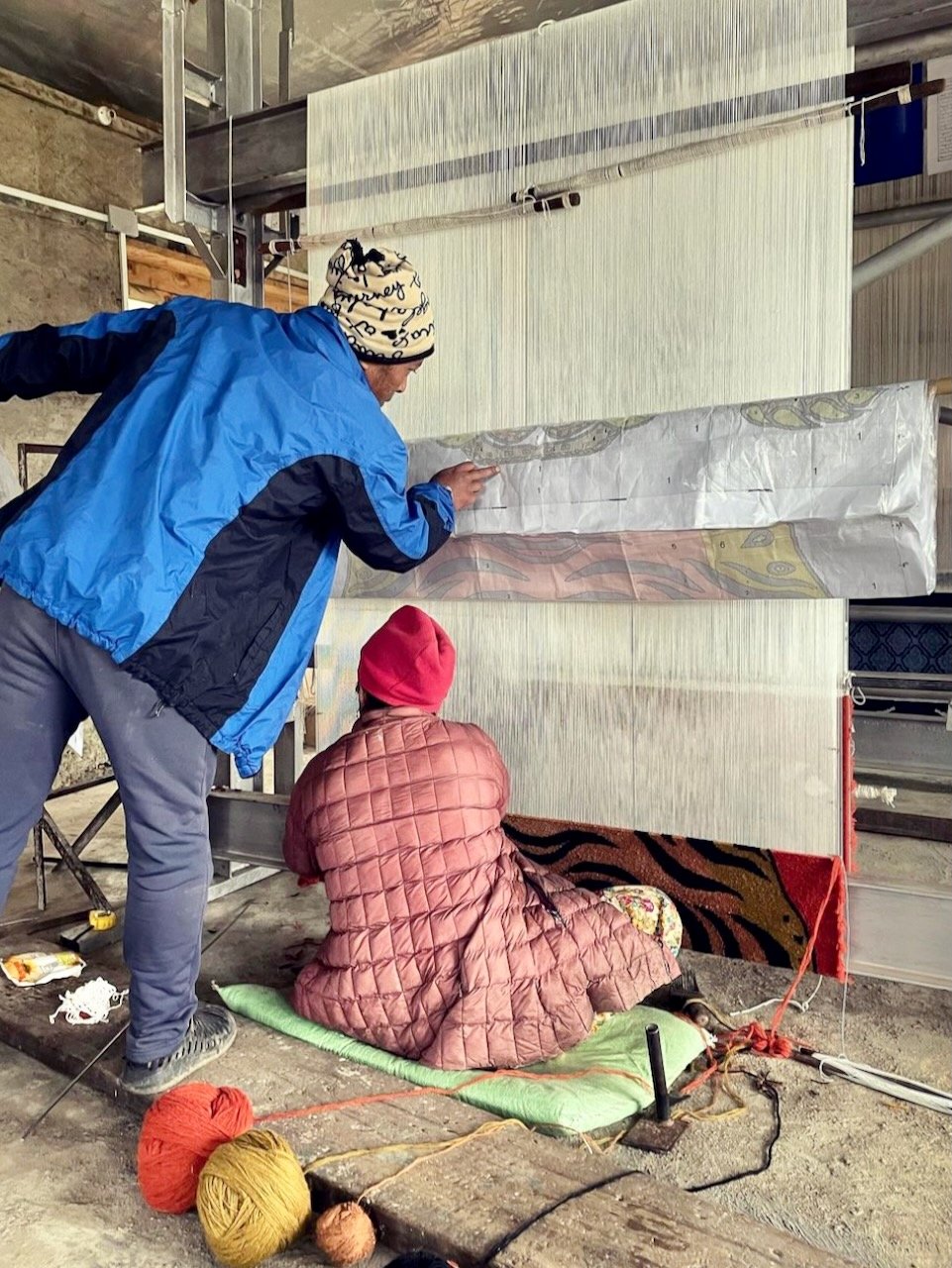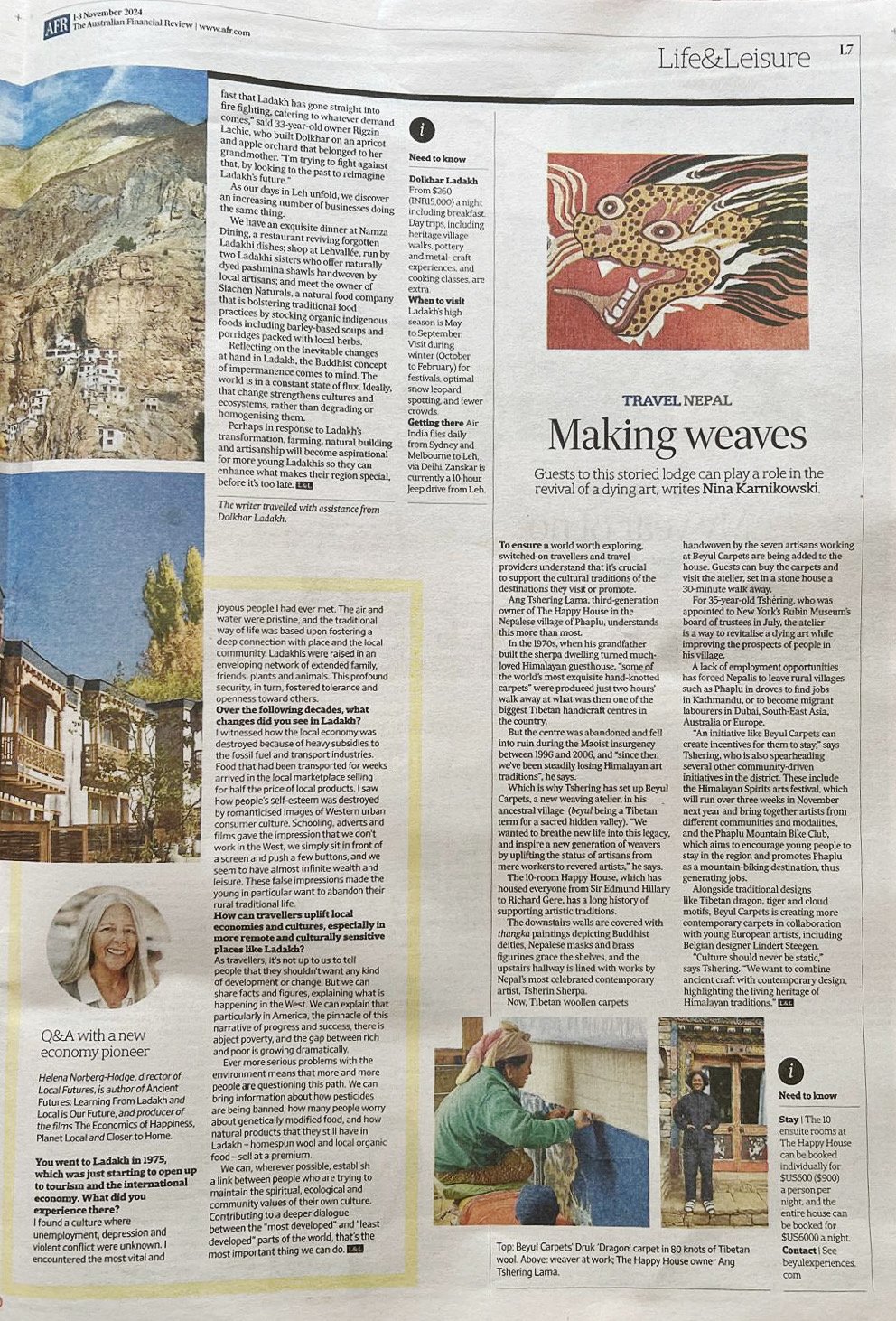ARTISANSHIP REVIVES A NEPALESE VILLAGE: LIFE & LEISURE
THE HAPPY HOUSE, A SHERPA STAY in the Nepalese village of Phaplu, IS revivING ANCIENT ARTISAN PRACTICES AND PROVIDING JOBS FOR LOCALS THROUGH ITS new weaving atelier, WRITES NINA KARNIKOWSKI.To ensure a world worth exploring, switched-on travellers and travel providers know that it’s crucial to support the cultural traditions of the destinations they visit or promote.
Ang Tshering Lama, third-generation owner of The Happy House in the Nepalese village of Phaplu, understands this more than most.
In the 1970s, when his grandfather built the sherpa dwelling turned much-loved Himalayan guesthouse, “some of the world’s most exquisite hand-knotted carpets” were produced just two hours’ walk away at what was then one of the biggest Tibetan handicraft centres in the country.
But the centre was abandoned and fell into ruin during the Maoist insurgency between 1996 and 2006, and “since then we’ve been steadily losing Himalayan art traditions,” he says.
Which is why he has set up Beyul Carpets, a new weaving atelier, in his ancestral village (beyul being a Tibetan term for a sacred hidden valley). “We wanted to breathe new life into this legacy, and inspire a new generation of weavers by uplifting the status of artisans from mere workers to revered artists.“
The 10-room Happy House, which has housed everyone from Sir Edmund Hillary to Richard Gere, has a long history of supporting artistic traditions. The downstairs walls are covered with thangka paintings depicting Buddhist deities, Nepalese masks and brass figurines grace the shelves, and the upstairs hallway is lined with works by Nepal’s most celebrated contemporary artist, Tsherin Sherpa.
Now, Tibetan woollen carpets handwoven by the seven artisans working at Beyul Carpets are being added to the house. Guests can buy the carpets and visit the atelier, set in a stone house a 30-minute walk away.
For 35-year-old Tshering, who was appointed to New York’s Rubin Museum’s board of trustees in July, the atelier is a way to revitalise a dying art while improving the prospects of people in his village.
A lack of employment opportunities has forced Nepalis to leave rural villages such as Phaplu in droves to find jobs in Kathmandu, or to become migrant labourers in Dubai, Southeast Asia, Australia or Europe.
“An initiative like Beyul Carpets can create incentives for them to stay,” says Tshering, who is also spearheading several other community-driven initiatives in the district.
These include the Himalayan Spirits arts festival, which will run over three weeks in November next year and bring together artists from different communities and modalities, and the Phaplu Mountain Bike Club, which aims to encourage young people to stay in the region and promotes Phaplu as a mountain-biking destination, thus generating jobs.
Alongside traditional designs like Tibetan dragon, tiger and cloud motifs, Beyul Carpets is creating more contemporary carpets in collaboration with young European artists, including Belgian designer Lindert Steegen.
“Culture should never be static,” says Tshering. “We want to combine ancient craft with contemporary design, highlighting the living heritage of Himalayan traditions.”
This article was first published in print and online here.

